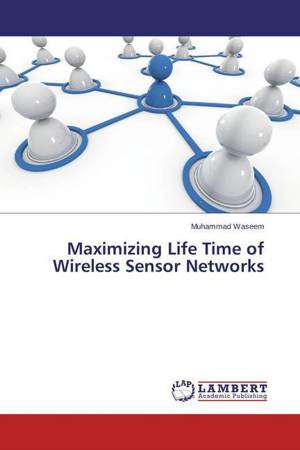
- Afhalen na 1 uur in een winkel met voorraad
- Gratis thuislevering in België vanaf € 30
- Ruim aanbod met 7 miljoen producten
- Afhalen na 1 uur in een winkel met voorraad
- Gratis thuislevering in België vanaf € 30
- Ruim aanbod met 7 miljoen producten
Zoeken
€ 40,95
+ 81 punten
Omschrijving
Sensor Node is key component of wireless micro sensor networks(WSNs) which communicates data in network. Power source of Sensor Node is battery. Major concern for researcher is the efficient utilization of power source of sensors in WSNs. An energy efficient routing protocol is one of the solutions to this problem. This book mainly pivots around routing protocols like LEACH, SEP, TEEN and DEEC. The working of these protocols and how these protocols extend the lifetime of WSNs is the main focus of this book. Analytic comparison of the features and performance issues of the aforementioned protocols is also a part of this book. I suggest "ACH scheme for WSNs" which improves lifetime of the above mentioned four protocols. Simulation results of LEACH, SEP, TEEN, DEEC and their comparison with ACH Scheme are also included. ACH Scheme deals with the selection of Cluster Head (CH) and remove very close CHs. The clusters are thus well apart from each other which in return conserve energy of network. Base station (BS) mobility is also introduced which increases stability period. Different trajectories (topologies) for mobility with single and dual base stations (BSs) are also discussed.
Specificaties
Betrokkenen
- Auteur(s):
- Uitgeverij:
Inhoud
- Aantal bladzijden:
- 84
- Taal:
- Engels
Eigenschappen
- Productcode (EAN):
- 9783659786488
- Verschijningsdatum:
- 23/09/2015
- Uitvoering:
- Paperback
- Afmetingen:
- 150 mm x 220 mm
- Gewicht:
- 136 g

Alleen bij Standaard Boekhandel
+ 81 punten op je klantenkaart van Standaard Boekhandel
Beoordelingen
We publiceren alleen reviews die voldoen aan de voorwaarden voor reviews. Bekijk onze voorwaarden voor reviews.








